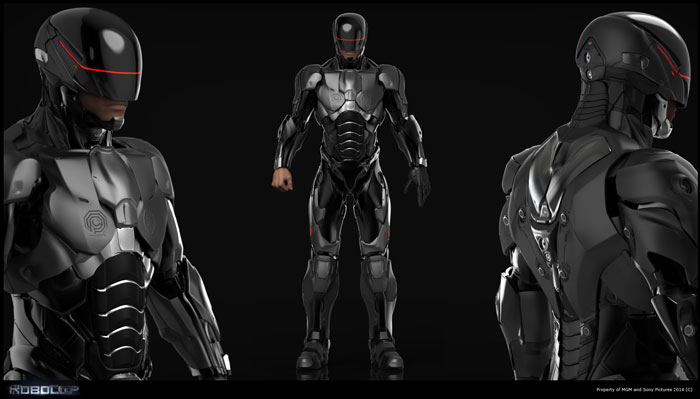Stratasys is a name that 3D printing regulars will be fond of, a company that is behind a host of amazing technologies; and those technologies are the enabling factor behind a wealth of amazing applications. American company Legacy Effects is the behind the scenes facilitator of some brilliant special effects work on a number of international blockbuster movies, a just one of many companies using Stratasys 3D printers. The company’s cool Objet multi-material 3D printing technology has been used in the creation of the latest RoboCop suit adorned by the title character in this year’s reboot movie.
Legacy Effects has a special effects filmography that includes a significant chunk of the biggest effects-laden movies in recent years that began with the largest grossing movie of all time, Avatar, and disaster epic 2012. That filmography also includes The Avengers, The Twilight Saga, Iron Man 3, The Life Of Pi and X-Men: Days Of Future Past. The company is now a regular for the most complex superhero and sci-fi visuals on the big screen.
Legacy Effects produced the RoboCop suit using Stratasys’ Objet Connex for a series of master mould patterns and direct parts. For patterns, segments were moulded and cast into other materials to create variants of the suit depending upon requirements. However, some versions of the suit were made of up to 90% directly 3D printed parts. For example the entire visor used in the movie is 3D printed with Stratasys transparent material VeroClear.
Jason Lopes, Lead Design Engineer at Legacy Effects and a valued regular on the 3D printing event scene, said: “First, in terms of the size of RoboCop’s chest piece specifically, only Stratasys’ 3D printing technology would allow us to print something at the actual size; the part virtually fills the entire build-tray. Second, the same part comprises a blend of smooth areas, as well as other areas that feature an extremely high level of detail, such as the police badge and other logos, which we needed to retain for the moulding process. There isn’t a technology currently available beyond that provided by Stratasys that affords us this level of intricate detail, together with the hard surface modelling of the shells all together in one print.”
Legacy Effects was also involved in 3D printing both master moulds and prototype parts for the RoboCop ‘Exo-suit.’ The prototyped pieces included fully-functional spring-operated fingers 3D printed in a single build using multi-materials, also on the company’s Stratasys Objet Connex 3D printers.

Bruce Bradshaw, Director of Marketing at Stratasys North America said: “Legacy Effects’ use of multi-material 3D printing as its solution of choice is indicative of how the technology is becoming increasingly integral to film-making. The ability to rapidly 3D print all materials together in one single print run meets the film industry prerequisite to save time and money. But the real show-stealer is Stratasys’ ultra-fine 16 micron-layer 3D printing. In the special effects world, fine detail and true-to-life models and parts are the industry standard and our Connex multi-material 3D printing technology continues to be a top performer among designers and engineers.”


